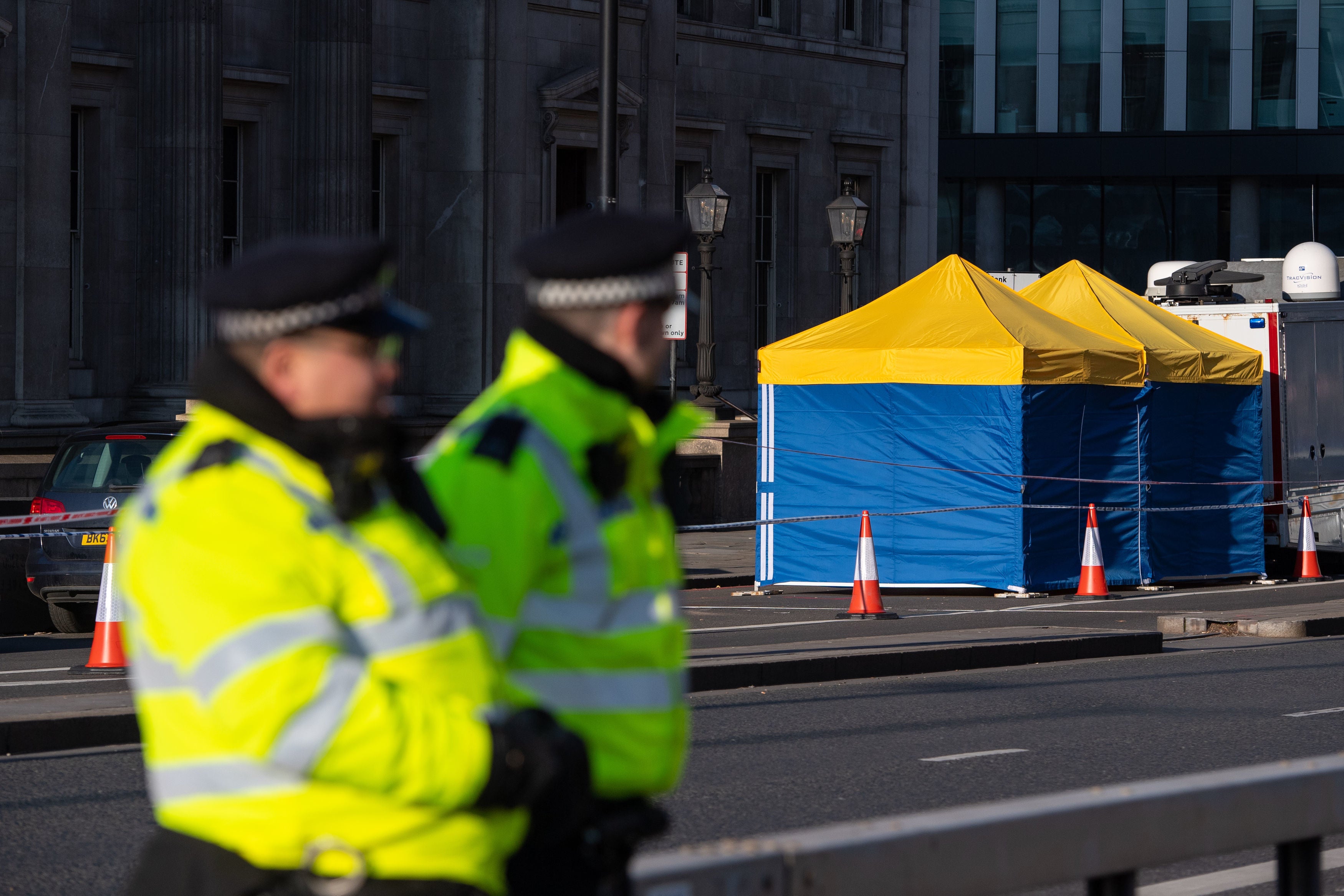Fishmongers’ Hall terrorist Usman Khan was shot 12 times by armed police, inquest hears
Terrorist continued moving for eight minutes after initial shots, prompting fears he would detonate suicide vest

Your support helps us to tell the story
From reproductive rights to climate change to Big Tech, The Independent is on the ground when the story is developing. Whether it's investigating the financials of Elon Musk's pro-Trump PAC or producing our latest documentary, 'The A Word', which shines a light on the American women fighting for reproductive rights, we know how important it is to parse out the facts from the messaging.
At such a critical moment in US history, we need reporters on the ground. Your donation allows us to keep sending journalists to speak to both sides of the story.
The Independent is trusted by Americans across the entire political spectrum. And unlike many other quality news outlets, we choose not to lock Americans out of our reporting and analysis with paywalls. We believe quality journalism should be available to everyone, paid for by those who can afford it.
Your support makes all the difference.A terrorist was shot 12 times by armed police after murdering two people, an inquest has heard.
Usman Khan launched a knife rampage at a prison rehabilitation event held at Fishmongers’ Hall in London on 29 November 2019.
Fellow attendees and staff fought him using makeshift weapons including a narwhal tusk, pike and fire extinguisher, and chased him outside onto London Bridge.
The inquest into his death heard that one of the first police officers on the scene opened fire after seeing Khan’s fake suicide vest, which was initially believed to be real.
The terrorist was initially shot twice, but continued moving for another eight minutes, and several police officers opened fire fearing he would get up or detonate the device.
A pathologist told Tuesday’s hearing that 12 of the 20 shots fired by armed officers hit Khan, but only three were fatal.
Dr Ashley Fegan-Earl told the inquest that despite receiving 12 gunshot wounds, many of them were superficial.
A post-mortem also found several blunt force trauma injuries from where Khan was jabbed with the narwhal tusk, punched and hit, but they did not contribute to his death.
Dr Fegan-Earl said: “Death in this case was due to gunshot wounds and was not related to any injuries caused by the members of the public who engaged him.
“There were a number of gunshot wounds and all of these injuries would bleed to a greater or lesser degree, but those that penetrated the body, and in particular those that damaged the lungs, the kidneys and the thoracic aorta would have given rise to very rapid blood loss.”
Two shots were fired at 2.02pm but Khan continued to move around on the floor until 2.10pm, at which point a further 18 shots were fired. He managed to sit upright briefly before losing consciousness.
The jury was shown computer-generated images of how the bullets had traversed his body, many of them passing through layers of skin, fat and muscle but missing his critical organs.
Only three shots, which hit his thoracic aorta, left lung and kidneys, would have caused the catastrophic bleeding that eventually caused him to lose consciousness.
Dr Fegan-Earl said that as Khan's critical organs were deprived of oxygen he would have fallen into cardiac arrest.
Armed police officers previously told the inquest of their astonishment as Khan continued to move after being shot numerous times.
But the pathologist said it was not unusual that Khan had survived for so long, nor that he was able to sit upright as the second volley of shots were fired.
“Very, very few injuries in forensic pathology cause instant incapacitation - it is not as we see in film and TV where individuals drop lifeless to the ground and only one gunshot does all of that,” Dr Fegan-Earl added.
“Only a gunshot to a part of the brain vital to the functions of life would do that - we do not have that here.”
Some officers told the inquest they had attempted a “critical shot” to the head, but believed they missed.
Dr Fegan-Earl said a person suffering Khan's level of injury would still be capable of ”entirely purposeful movement for some time“ between the shots being fired and him falling into cardiac arrest.
The inquest also heard that Khan was not intoxicated at the time of analysis of hair and toenail samples found evidence he occasionally used cocaine in the months before his death.
There was also evidence of heroin use, although the substance could have been ingested by spending time around someone who was smoking crack.
The jury is due to retire to consider its conclusion on Thursday, and will rule whether Khan was lawfully killed by police.
Additional reporting by PA



